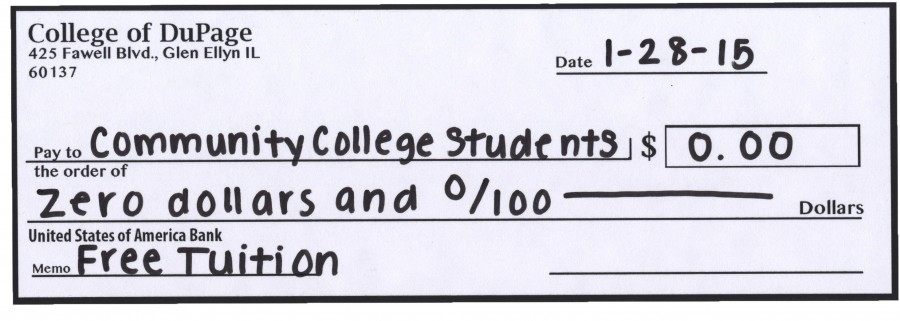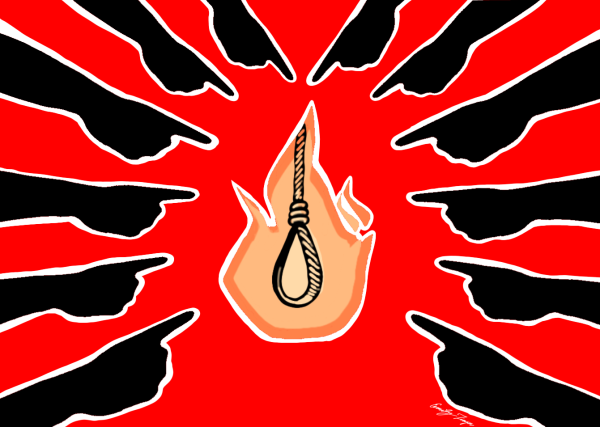Land of the free tuition
Free community college proposal good in theory, but questions remain
On Jan. 20, Americans gathered around their televisions and tuned in to watch President Barack Obama’s State of the Union address. Among a variety of the usual bullet points—taxes, minimum wage, and job creation—an issue that stood out as one of the most highly anticipated was the proposal of free community college tuition.
Earlier this month, Obama announced his plan to put an end to the inaccessibility of higher education as a result of financial insufficiency. He proposed that any student that earned a 2.5 GPA in high school and maintains such in college could attend community college at no cost. Well, at no cost to them.
The federal government would be expected to cover 75 percent of the expense, with state governments providing the other 25 percent. This led to many questions surrounding the plan during the weeks leading up to the State of the Union: Where will this money come from? How will this affect funding for individual schools? Can the federal government manage to pay their required contribution? Can the states do it? And most importantly, will the plan even work?
Unfortunately, those who watched the address to receive answers to these questions fell short of their goal. On the other hand, those hoping to find an uplifting speech about the American dream and the power of a “tight knit family” in “tough times” got just what they were looking for. While Obama did mention the proposal in his speech, citing it as a “chance to graduate ready for the new economy, without a load of debt,” he only spoke on the matter for about 2 minutes. And so, we are left to more speculation as to how exactly this plan is meant to be implemented and how it will affect us.
This issue, particularly for students at COD, should be a big deal. While on the surface it may seem like this plan will only impact future community college students, depending on when it is put into effect, many of us could be saving some serious cash. It’s already been proven to work in Tennessee and Chicago; Obama based his proposal on their free community college initiatives.
Yet despite the benefits, those vital unanswered questions won’t go away. The issue of attaining the funding for this process won’t be easy on either a state or federal level, and with such a large number of government-paid tuitions and the possibility of higher enrollment rates, community colleges will have to find the means of housing more students at less cost. These aren’t exactly the kinds of feats we can afford to take lightly, especially at COD, where lack of parking and classroom space is already an issue.
Not only that, but it essentially lowers the threshold for the full tuition scholarship that already exists at COD: the Presidential Scholarship. Presidential Scholars must meet the criteria of a 3.8 GPA (or a 27 or higher composite ACT score), submit a 250 word essay and complete 20 hours of service learning by the end of their first year at the college. Even after meeting all of the aforementioned requirements, only a select number of students receive the scholarship.
Needless to say, this is a much more rigorous standard for students to achieve in comparison to a 2.5 GPA. Depending on how one looks at it, this is either a huge opportunity for thousands of more students or a slap in the face to those that worked to meet the scholarship requirements for the same benefits. Then again, the scholarship could be removed altogether, considering that if the proposal is put into action it will be rendered useless.
In the end, it seems as though we can’t win either way. Implement the proposal, and state and federal governments are left paying the tab on a bill they just simply can’t afford, potentially by raising taxes. Yet without it, the US remains without the means for its entire people to receive the higher education that today’s workforce demands. Depending on where you stand economically, the better option differs.
As for our attitude, we lie somewhere between the shades of gray. It’s quite the plan on paper, but put it into action and the logistics get too muddled. There’s still the possibility of a miracle; every question could find an answer and every hardworking student could get the education they deserve. In the meantime, however, it’s important to see this proposal for what it is: an idea, still only half-baked, with the potential of becoming something bigger after a little more time on the drawing board. Still, it never hurts to remain hopeful.








